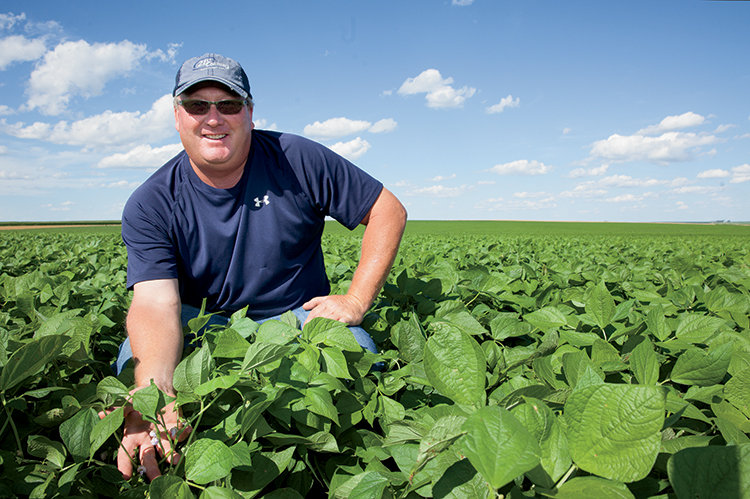Home > Nebraska > Nebraska Crops & Livestock > Nebraska Celebrates International Year of the Bean
Nebraska Celebrates International Year of the Bean

Beans are a big business in Nebraska agriculture. The state ranked third in the nation for dry edible bean production in 2014, only behind North Dakota and Michigan.
“Many Nebraskans don’t even realize how large of an economic impact dry edible beans have on the areas where they are grown,” says Lynn Reuter, executive secretary for the Nebraska Dry Edible Bean Commission. “Nebraska is the number one producer of Great Northern beans in the nation. We’re second in pinto and light red kidney beans, and fourth in black bean production.”
In 2014, Nebraska produced 3.8 million, 100-pound bags, of dry edible beans, which were valued at $120 million. Nebraska’s dry bean production occurs in the western panhandle portion of the state where the climate is driest, which is most suitable for growing dry beans.
“When you visit with people in eastern Nebraska, they automatically think you mean soybeans, not dry edible beans. And the two aren’t even related,” Reuter says. “It’s amazing to see the difference in elevation and climate from eastern to western Nebraska.”
![Nebraska dry edible beans [INFOGRAPHIC]](https://eadn-wc01-4177395.nxedge.io/wp-content/uploads/2020/05/Screen-Shot-2016-03-09-at-2.30.12-PM.jpg)
Meet A Nebraska Bean Producer
Cindi Allen and her husband, Doug, have been growing dry edible beans – mainly light red kidneys and sometimes pintos – in the Ogallala area for three decades. The beans are typically planted in June and harvested in late September. Then they are cleaned, sorted, packaged and marketed.
“Although most dry edible beans grown in Nebraska are consumed domestically, they are also exported around the world,” Allen says. “Because beans provide a low-cost source of protein, complex carbohydrates and valuable micronutrients, the United Nations has declared 2016 the International Year of the Pulses – or beans, lentils and peas – for food security, nutrition and environment.”
Beans are often called a superfood due to their high protein, fiber and vitamin content. They are low in fat and packed with iron, potassium and folate.
“It takes know-how to grow dry beans, and my husband is a terrific bean producer. I take pride in his ability,” Allen says. “It is satisfying to know we grow an affordable superfood for consumers.”

Uses for Beans
Beans can be a main dish, but they also work well as a side dish or in soups and casseroles.
“Beans are one of the most economical values in protein and nutritionally rich foods. They’re a great way to feed a family on a budget,” Reuter says. “They work well as a protein extender. For example, you don’t need to add as much meat to a soup if you are adding beans.”
Today, beans are being used in snack foods and main dishes, such as black bean burgers and black bean chips.
“Beans increase the nutritional value of snacks,” Allen says. “Similarly, bean flour is used in baking, increasing the protein, fiber and antioxidants in gluten-free breads, noodles and even desserts, such as brownies.”
Great Northern beans are known for their versatility. They work well in appetizers, soups and casseroles, and can be used as a substitute for navy and cannellini beans.
“Pintos are used in a lot of Mexican dishes, while black beans are often found in other ethnic foods,” Reuter says. “Light red kidneys are a staple ingredient in chili, as well as on salad bars.”
Find recipes and cooking tips for dry edible beans online at nebraskadrybean.com. The Nebraska Dry Bean Commission also shares recipes on its Facebook page and Pinterest board at pinterest.com/nebeancomm.
![Nebraska dry edible beans [INFOGRAPHIC]](https://eadn-wc01-4177395.nxedge.io/wp-content/uploads/2020/05/Screen-Shot-2016-03-09-at-2.30.23-PM.jpg)



